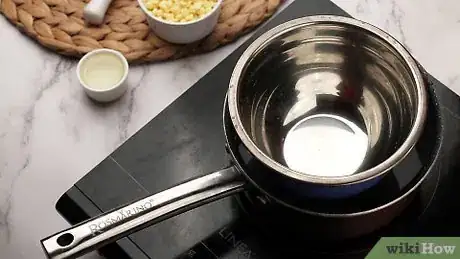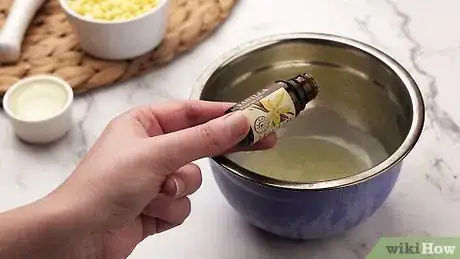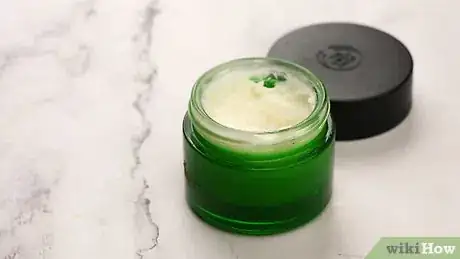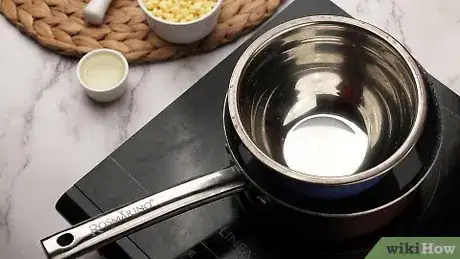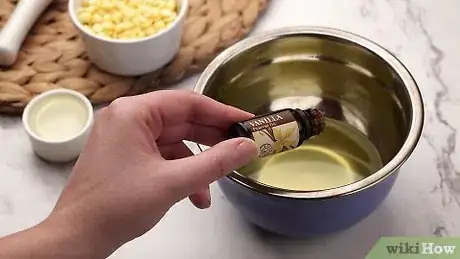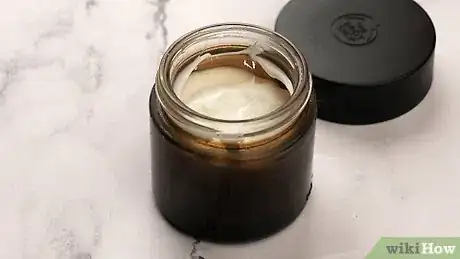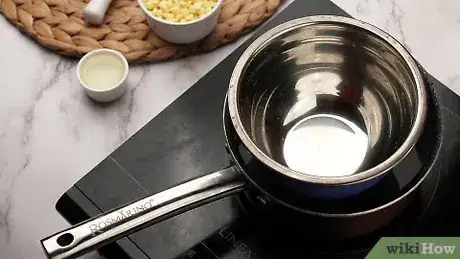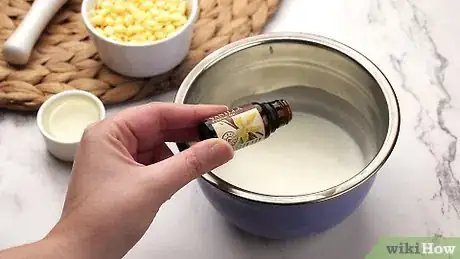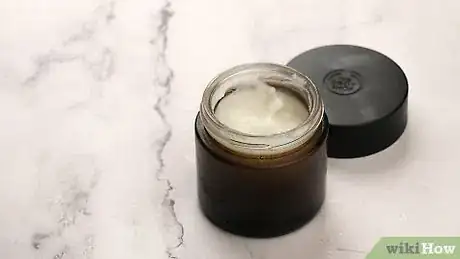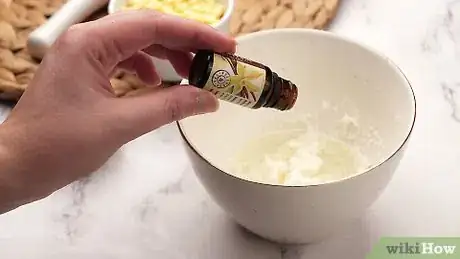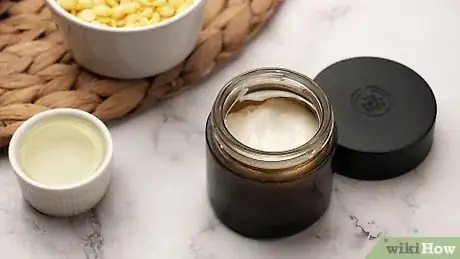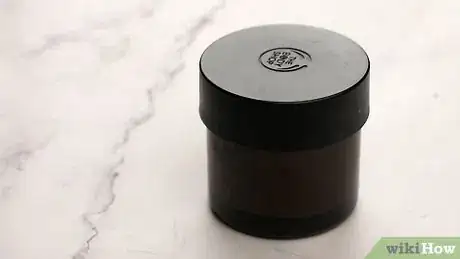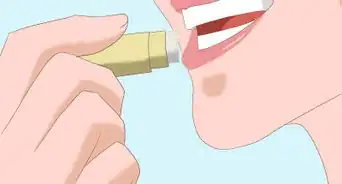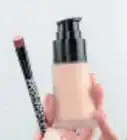This article was co-authored by Mohiba Tareen, MD. Mohiba Tareen is a board certified Dermatologist and the founder of Tareen Dermatology located in Roseville, Maplewood and Faribault, Minnesota. Dr. Tareen completed medical school at the University of Michigan in Ann Arbor, where she was inducted into the prestigious Alpha Omega Alpha honor society. While a dermatology resident at Columbia University in New York City, she won the Conrad Stritzler award of the New York Dermatologic Society and was published in The New England Journal of Medicine. Dr. Tareen then completed a procedural fellowship which focused on dermatologic surgery, laser, and cosmetic dermatology.
There are 8 references cited in this article, which can be found at the bottom of the page.
wikiHow marks an article as reader-approved once it receives enough positive feedback. In this case, 92% of readers who voted found the article helpful, earning it our reader-approved status.
This article has been viewed 156,053 times.
Moisturizer is an important part of skincare routine, whether you have dry skin, oily skin, or combination skin. Unlike lotion, moisturizer goes mainly on your face and neck. Unfortunately, many store bought moisturizers are either too expensive or too full of chemicals. Luckily, it is easy to make your own moisturizer right at home! The best part: you can see and control exactly what goes into it to suit your personal needs and tastes.
Ingredients
- ½ cup (115 grams) shea butter
- 2 tablespoons oil (ie: apricot seed, avocado, jojoba, or sweet almond oil)
- 10 to 15 drops essential oil (choose 2 to 3 different kinds)
- ½ cup (115 grams) coconut oil
- 1 tablespoon (15 grams) cocoa butter
- 2 tablespoons (30 milliliters) oil (ie: apricot seed, avocado, jojoba, or sweet almond oil)
- 10 to 15 drops essential oil (choose 2 to 3 different kinds)
- ½ cup (120 milliliters) sweet almond oil
- ¼ cup (55 grams) coconut oil
- ¼ cup (227 grams) beeswax
- 2 tablespoons (30 grams) cocoa butter or shea butter (optional)
- 1 teaspoon vitamin E oil (optional)
- 10 to 15 drops essential oil (optional)
- 3 tablespoons (45 grams) shea butter
- 3 tablespoons (45 milliliters) apricot seed oil
- 1 teaspoon vitamin E oil
- 1 teaspoon aloe vera gel
- 10 to 15 drops essential oil (Clary sage, helichrysum, and myrrh recommended)
Steps
Making a Shea Butter Based Moisturizer
-
1Assemble a double boiler. Fill a saucepan with 1 to 2 inches (2.54 to 5.08 centimeters) of water and place a glass, heat-safe bowl on top. Make sure that the bottom of the bowl is not touching the surface of the water.
-
2Melt ½ cup (115 grams) of shea butter in the double boiler over medium heat. Stir the shea butter occasionally to help it melt evenly. Unlike coconut oil, shea butter does not clog pores, making it ideal for sensitive skin or acne-prone skin.
Warning: Shea butter is a nut derivative, so avoid handling it if you have a nut allergy.[4]
Advertisement -
3Add 2 tablespoons (30 milliliters) of oil and stir with a whisk until combined. You can use just one type of oil, or you can use a combination of two different kinds. Consider using any of the following oils:[5]
- Apricot seed
- Avocado
- Jojoba
- Sweet almond
-
4Refrigerate the mixture for 10 to 15 minutes. Take the bowl off of the saucepan, cover it with a sheet of plastic wrap, and place it into the fridge. Take it out when the mixture starts to harden and turn translucent, about 10 to 15 minutes. Don't let it harden completely.[6]
-
5Add in 10 to 15 drops of your desired essential oils. Choose 2 to 3 different types of essential oil, and add them to the bowl. You need 10 to 15 drops total, so play around with the different proportions. For example, you could have 5 drops of lavender essential oil, 3 drops of carrot seed oil, and 3 drops of Clary sage. Consider any of the following oils listed below:[7]
- Carrot seed
- Clary sage
- Frankincense
- Lavender
- Myrrh
- Rosemary
-
6Blend the ingredients together using an electric mixer for about 1 minute. The cream is ready once it turns thick and creamy—like whipped cream. You can do this using a handheld mixer or a stand mixer. If you don't have a mixer, you can use a food processor fitted with whisk attachments.
-
7Transfer the mixture into a glass jar using a rubber spatula and store it in a cool, dry place out of direct sunlight. Avoid using plastic, as it tends to leach chemicals overtime. The essential oils in the cream may also degrade the plastic overtime. Use the cream within 6 to 12 months.
Making a Coconut Oil Based Moisturizer
-
1Assemble a double boiler. Fill a saucepan with 1 to 2 inches (2.54 to 5.08 centimeters) of water and place a glass, heat-safe bowl on top. Make sure that the bottom of the bowl does not touch the water.
-
2Melt ½ cup (115 grams) of coconut oil and 1 tablespoon (15 grams) of cocoa butter in the double boiler over medium heat. Stir the two together with a whisk to help them melt evenly. Coconut oil and cocoa butter are both very moisturizing. Keep in mind, however, that coconut oil can clog pores, so it may not be recommended for those who suffer from acne, blackheads, or oily skin.
-
3Remove the mixture from heat, let it cool, then whisk in 2 tablespoons (30 milliliters) of oil. You can use just one type of oil or a combination of two different types. Consider using any of the following oils:[8]
- Apricot seed
- Avocado
- Jojoba
- Sweet almond
-
4Add in 10 to 15 drops of your desired essential oils. Choose 2 to 3 different types of essential oil, then add them to the bowl. You will need 10 to 15 drops total, so you can experiment with different combinations. For example, you could have 4 drops of carrot seed essential oil, 4 drops of Clary sage, and 4 drops of Myrrh. Consider any of the following oils listed below:[9]
- Carrot seed
- Clary sage
- Frankincense
- Lavender
- Myrrh
- Rosemary
-
5Refrigerate the mixture for 1 hour. Cover the bowl with a sheet of plastic wrap and put it into the fridge. Leave it there for 1 hour so that it can harden and set. This will make it easier to whip later on.[10]
-
6Whisk the mixture until it is light and fluffy. Take the bowl out of the fridge, and whisk the mixture together.[11] You can do it by hand with a whisk, but an electric mixer (either stand or handheld) will be much faster and easier. You can even use a food processor fitted with whisks.
-
7Refrigerate the mixture for half an hour. This will set the mixture to its final consistency and make it more cream like.[12]
-
8Use a rubber spatula to transfer the cream to a glass jar, and store it in a cool, dry place away from sunlight. Do not use a plastic jar. The plastic may leach chemicals into the cream over time; the essential oils may also degrade the plastic as well. Use the cream within 6 to 12 months.
- Coconut oil has a low melting point. If your cream starts to get too soft, store it in the fridge.[13]
Making a Beeswax Based Moisturizer
-
1Assemble a double boiler. Fill a saucepan with 1 to 2 inches (2.54 to 5.08 centimeters) of water and place it on the stove. Set a heat-safe glass bowl on top and make sure that the bottom of the bowl is not touching the water.
- This is a beeswax-based moisturizer, so it is best to use it on the body and not on the face.
-
2Melt ¼ cup (227 grams) of beeswax in the double boiler over medium heat. Chop up the beeswax into smaller pieces first, then place it into the bowl. Turn the heat to medium, and wait until the wax starts to melt. Stir it occasionally with a spoon to help it melt faster. This will create the base for your moisturizer.
-
3Whisk in ¼ cup (55 grams) of coconut oil. Keep stirring until the coconut oil melts and gets evenly mixed into the melted beeswax. Coconut oil is naturally moisturizing, but some people find that it clogs pores. If you tend to get a lot of blackheads or acne, you may wish to omit it or replace it with shea butter.
-
4Add in some cocoa butter, shea butter, or vitamin E oil, if desired. Keep stirring these until they melt and combine with the beeswax mixture. All three are wonderful for the skin. They are not completely necessary, but they can take your moisturizer to the next level.
-
5Remove the mixture from heat and stir in the sweet almond oil. Carefully lift the bowl off of the saucepan and set it down on your counter. Stir in the sweet almond oil. If you can't find any sweet almond oil, try any of the following:
- Apricot seed
- Avocado
- Jojoba
-
6Add 10 to 15 drops of your favorite essential oil, if desired. You can use just one type of essential oil or a combination of different types. If you wish to use more than one type of essential oil, make sure that you end up with 10 to 15 drops total. For example, you could use 5 drops of lavender essential oil, 3 drops of frankincense, and 3 drops of rosemary. All of the below essential oils are wonderful for the skin.
- Carrot seed
- Clary sage
- Frankincense
- Lavender
- Myrrh
- Rosemary
-
7Pour the mixture into a glass jar. Avoid using a plastic jar, as the chemicals in the plastic may eventually leach into the moisturizer. The essential oils may also corrode the plastic as well.
-
8Wait for the moisturizer to cool before using it. Store it in a cool, dry place, out of reach of sunlight, and use it within 6 months.
Making an Anti-Aging Moisturizer
-
1Whip 3 tablespoons (45 grams) of shea butter in a bowl until it turns creamy. You can do this by hand using a whisk, but an electric mixer (such as a stand mixer or a handheld mixer) would be much faster. You can even use a food processor fitted with whisks.
- Shea butter is great for sensitive skin, because it doesn't clog pores. It also contains lots of anti-aging vitamins.
-
2Add 3 tablespoons (45 milliliters) of apricot seed oil. Apricot seed oil is especially good for sensitive skin because it is non-irritating and soothing. It also feels light and doesn't clog up pores. If you can't find any apricot seed oil, consider any of the following oils:
- Avocado
- Jojoba
- Sweet almond
-
3Add in 1 teaspoon of both vitamin E oil and aloe vera gel. Vitamin E oil helps reduce signs of aging, such as wrinkles and lines. It also helps promote skin growth and regeneration. Aloe vera gel is cool and soothing, making it idea for reducing acne and inflammation.
-
4Add in your essential oils. You will need 3 drops of Clary sage, 5 drops of myrrh, and 5 drops of helichrysum. All three oils have anti-aging benefits and help reduce the appearance of wrinkles and lines. If you can't find these oils anywhere, or if you simply don't like them, consider any of the following anti-aging oils:
- Carrot seed
- Frankincense
- Geranium
- Patchouli
- Sandalwood
-
5Beat the ingredients together with a whisk, then transfer it to a glass jar. Once you have all of the ingredients in your bowl, beat them together with a whisk until all of the oils, butters, and gels are evenly mixed together. Transfer the mixture into a glass jar using a rubber spatula.
-
6Store the moisturizer in a cool, dry place away from sunlight. Use it within 6 to 12 months.
Expert Q&A
Did you know you can get expert answers for this article?
Unlock expert answers by supporting wikiHow
-
QuestionWhat ingredients are the most effective at moisturizing?
 Mohiba Tareen, MDMohiba Tareen is a board certified Dermatologist and the founder of Tareen Dermatology located in Roseville, Maplewood and Faribault, Minnesota. Dr. Tareen completed medical school at the University of Michigan in Ann Arbor, where she was inducted into the prestigious Alpha Omega Alpha honor society. While a dermatology resident at Columbia University in New York City, she won the Conrad Stritzler award of the New York Dermatologic Society and was published in The New England Journal of Medicine. Dr. Tareen then completed a procedural fellowship which focused on dermatologic surgery, laser, and cosmetic dermatology.
Mohiba Tareen, MDMohiba Tareen is a board certified Dermatologist and the founder of Tareen Dermatology located in Roseville, Maplewood and Faribault, Minnesota. Dr. Tareen completed medical school at the University of Michigan in Ann Arbor, where she was inducted into the prestigious Alpha Omega Alpha honor society. While a dermatology resident at Columbia University in New York City, she won the Conrad Stritzler award of the New York Dermatologic Society and was published in The New England Journal of Medicine. Dr. Tareen then completed a procedural fellowship which focused on dermatologic surgery, laser, and cosmetic dermatology.
FAAD Board Certified Dermatologist I recommend that my patients use moisturizers that have Ceramide as their base. Ceramide is a protein that helps hold onto water, and it really helps the water stay deeper in the skin barrier. Shea butter is also fantastic, but it's a nut derivative, so you'd need to be careful with that if you have a nut allergy. Glycerin and petrolatum are good options, as well.
I recommend that my patients use moisturizers that have Ceramide as their base. Ceramide is a protein that helps hold onto water, and it really helps the water stay deeper in the skin barrier. Shea butter is also fantastic, but it's a nut derivative, so you'd need to be careful with that if you have a nut allergy. Glycerin and petrolatum are good options, as well.
Warnings
- Always make sure that you are not allergic to any ingredients that you add to your moisturizer.⧼thumbs_response⧽
- These moisturizers are thick and may not do well in a pump dispenser. It is best to store them in a jar.⧼thumbs_response⧽
- To reduce the risk of infection, make sure that all of the utensils you are using have been properly cleaned and sterilized.⧼thumbs_response⧽
Things You'll Need
- Saucepan
- Glass, heat-safe bowl
- Whisk
- Electric mixer
- Rubber spatula
- 4 to 8-ounce (120 to 240 milliliters) glass jar
References
- ↑ http://lifefromthegroundup.us/2014/10/homemade-non-greasy-moisturizing-lotion/
- ↑ http://www.freebiefindingmom.com/homemade-face-moisturizer/
- ↑ https://wellnessmama.com/beauty/homemade-lotion-recipe/
- ↑ Mohiba Tareen, MD. FAAD Board Certified Dermatologist. Expert Interview. 26 March 2020.
- ↑ http://livesimply.me/2014/04/16/homemade-moisturizing-lotion-recipe-no-coconut-oil/
- ↑ http://lifefromthegroundup.us/2014/10/homemade-non-greasy-moisturizing-lotion/
- ↑ http://livesimply.me/2014/04/16/homemade-moisturizing-lotion-recipe-no-coconut-oil/
- ↑ http://livesimply.me/2014/04/16/homemade-moisturizing-lotion-recipe-no-coconut-oil/
- ↑ http://livesimply.me/2014/04/16/homemade-moisturizing-lotion-recipe-no-coconut-oil/
- ↑ http://www.therefreshanista.com/diy-vitamin-e-nighttime-face-cream/
- ↑ http://www.therefreshanista.com/diy-vitamin-e-nighttime-face-cream/
- ↑ http://www.therefreshanista.com/diy-vitamin-e-nighttime-face-cream/
- ↑ http://www.freebiefindingmom.com/homemade-face-moisturizer/
- ↑ Mohiba Tareen, MD. FAAD Board Certified Dermatologist. Expert Interview. 26 March 2020.
- ↑ http://www.homemademommy.net/2014/03/homemade-daily-facial-moisturizer-spf.html
About This Article
To make your own moisturizer, start by stirring together 1/2 cup of coconut oil and 1 tablespoon of cocoa butter in a double boiler. Once the mixture is melted, remove it from the heat and stir in 2 tablespoons of sweet almond oil. Next, add in 15 drops of any combination of essential oils, such as lavender and rosemary, before putting the mixture in the refrigerator to cool. After 1 hour, take it out of the refrigerator and whisk it until the lotion is light and fluffy. Finally, refrigerate the lotion for another 30 minutes before transferring it to a small container. For tips on how to make a lotion with anti-aging ingredients, like vitamin E and aloe vera, read on!
